486. The last koti glyph in the C text
could perhaps be explained by assuming it represented the
place where some significant star returned to
visibility - because the number of 348 glyphs on side b could have
been designed in order to be
364 - 16:
 |
 |
 |
154 |
|
Ca9-8 (8 * 29½) |
Ca9-9 |
Ca9-10 |
|
ku
tupu te poporo |
kotia |
kua rere |
|
Poporo.
A
plant (Solanum
forsteri);
poporo haha, a
sort of golden
thistle. Vanaga.
A
berry whose juice is
mixed with ashes of
ti leaves in
tattoing. Ta.:
oporo, a
capsicum plant. The
Tahiti oporo
is not a degradation
of poporo but
is the original
poro stem
augmented by that
o which in
Tahiti is
word-formative in a
sense too elusive to
find expression in
European ideas.
Mgv.: poporo,
the July season when
the leaves fall.
Mq.: pororo,
dry, arid. Sa.:
palolo-mua,
July. Ma.: paroro,
cloudy weather.
Poporohiva, milk
thistle. Churchill. |
|
314 / 2
= 584 / 2 - 270 / 2
=
157 |
|
...
471 (= 229 + 242) =
1½ * 314 = 3 * 157 =
300 + 3 * 57, which
should remind us of
how Epimenides slept
for 57 years in a
cave (471 + 57 = 2 *
264 = 11 * 48) and
how he then lived on
to be 157 years (or
299 or 154) ... |
|
141 |
kua tupu te
kihikihi |
ku kikiu |
te henua |
Te hokohuki |
te moko |
|
Kihi.
Kihikihi,
lichen; also: grey,
greenish grey,
ashen. Vanaga.
Kihikihi, lichen
T, stone T.
Churchill.
The Hawaiian day was
divided in three
general parts, like
that of the early
Greeks and Latins, -
morning, noon, and
afternoon -
Kakahi-aka,
breaking the
shadows, scil.
of night; Awakea,
for Ao-akea,
the plain full day;
and Auina-la,
the decline of the
day.
The lapse of the
night, however, was
noted by five
stations, if I may
say so, and four
intervals of time,
viz.: (1.) Kihi,
at 6 P.M., or about
sunset; (2.) Pili,
between sunset and
midnight; (3) Kau,
indicating midnight;
(4.) Pilipuka,
between midnight and
surise, or about 3
A.M.; (5.)
Kihipuka,
corresponding to
sunrise, or about 6
A.M. ... (Fornander) |
 |
 |
 |
 |
 |
|
534 - 235 =
299 |
Cb6-28 (5 * 107) |
Cb6-29 (536) |
Cb7-1 (290 / 2) |
Cb7-2 (392 + 2 * 73) |
|
CLOSE TO THE FULL
MOON: |
|
Sept 5 (614 = 534 +
80)
AL
SHARAS (The Ribs) =
β
Crateris
(168.6) |
6 (615 = 249 + 366)
Al Zubrah-9 (The
Mane) /
Purva Phalguni-11
(First Reddish One)
ZOSMA
(Girdle) =
δ
Leonis
(169.2),
COXA (Hips) =
θ
Leonis
(169.4)
*128.0 = *169.4 -
*41.4 |
7 (250 = 67 + 183)
φ
Leonis (170.0),
ALULA (First Spring
of the Gazelle) =
ξ,
ν
Ursae Majoris
(170.5),
LABRUM =
δ
Crateris
(170.6) |
8
σ Leonis (171.1), λ
Crateris (171.6), ι
Leonis, ε Crateris
(171.9) |
9
γ Crateris, π
Centauri (172.0), κ
Crateris (172.5), τ
Leonis (172.8)
GREDI (α Capricorni)
|
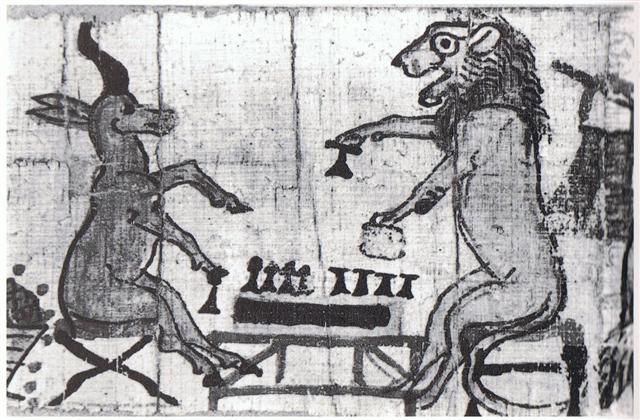 |
|
'Aug 9 |
10 |
11 (223 = 250 - 27) |
12 |
13 (225) → Creation
of our present world |
|
"July 26 |
27 (208) |
28 (209 = 250 - 41) |
29 |
30 (225 - 14) |
|
JULY 3 (184 = 248 -
64) |
4 |
5 |
6 |
7 |
|
CLOSE TO THE SUN: |
|
March 6 (431 = 351 +
80)
SIMMAH = γ Piscium
(351.7) |
7 (432 = 366 + 66)
φ Aquarii (352.0), ψ
Aquarii (352.4), χ
Aquarii (352.6), γ
Tucanae, φ Gruis
(352.8)
*311.0 = *352.4 -
*41.4 |
8 (67)
ο Cephei (353.3),
KERB (Bucket Rope) =
τ Pegasi
(353.6) |
9
κ Piscium (354.2), θ
Piscium (354.4), υ
Pegasi (354.9)
*313.0 = *354.4 -
*41.4 |
10
ο Gruis,
Snowball Nebula =
NGC7662 Andromedae
(355.0), τ Oct.
(355.3) |
|
CROSS-BARS |
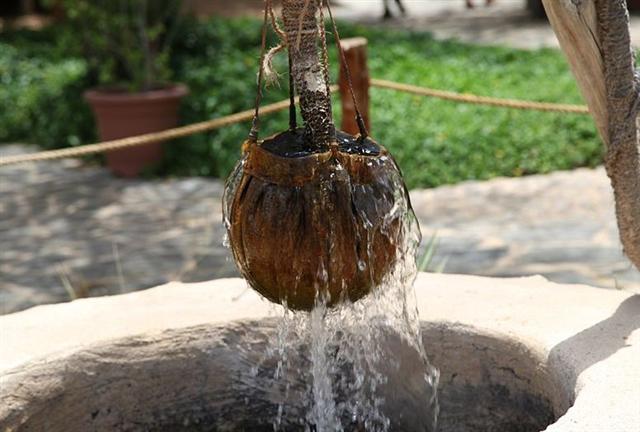
... With
α
Andromedae [Sirrah
→ Navel]
and
γ
Pegasi [Kerb], as
the Three Guides,
it [Caph →
Phoenician Kaph,
Hand] marks the
equinoctial colure,
itself exceedingly
close to that great
circle; and, being
located on the same
side of the pole as
is Polaris, it
always affords an
approximate
indication of the
latter's position
with respect to that
point. This same
location, 32º from
the pole, and very
near to the prime
meridian, has
rendered it useful
for marking sidereal
time. When above
Polaris and nearest
the zenith the
astronomical day
begins at 0 hours, 0
minutes, and 0
seconds; when due
west the sidereal
time is 6 hours;
when south and
nearest the horizon,
12 hours, and when
east, 18 hours; this
celestial clockhand
then moving on the
heavenly dial
contrary to the
motion of the hands
of our terrestrial
clocks, and at but
one half the speed
...
...
τ,
4.5, with
υ,
was Al Sufi's
Sa'd al Na'amah,
which Knobel thinks
should be Al
Na'āim, the
Cross-bars over a
well; but they also
were known as Al
Karab, the
Bucket-rope. The
usual titles for
τ
- Markab and
Sagma or
Salma - are from
Bayer, but the last
two should be
Salm, a Leathern
Bucket
... |
|
'Febr 7 |
8 |
9 (40 = 67 - 27) |
10 |
11 (42) |
|
"Jan 24 |
25 (208 - 183) |
26 (= 67 - 41) |
27 |
28 (42 - 14) |
|
JAN 1 |
2 |
3 (= 67 - 64) |
4 |
5 |
|
189 |
ku
hakarava |
kotia
hia |
kua
haro te rima |
te
marama |
 |
 |
 |
 |
|
Cb14-7 (2 * 168) |
Cb14-8 |
Cb14-9 (730) |
Cb14-10 (339) |
|
CLOSE TO
THE FULL
MOON: |
|
March 17
DZANEB (Tail) =
ω
Piscium
(362.4),
γ²
Oct.
(362.8)
*321.0 = *362.4 - *41.4 |
18 (260 - 183)
η Tucanae (363.0), ψ
Pegasi (363.1),
32 Piscium (363.2), π Phoenicis (363.4), ε Tucanae (363.6), τ Phoenicis
(363.9)
*322.0 = *363.4 - *41.4 |
19 (78)
θ Oct. (364.4)
*323.0 = *364.4 - *41.4 |
20
no star listed (365) |
|
'Febr 18 |
19 (50 = 77 - 27) |
20 |
21 |
|
CLOSE TO
THE SUN: |
|
Sept 16
PHEKDA ('Thigh') =
γ
Ursae Majoris,
β
Hydrae (179.3),
η
Crateris (179.9)
DENEB CYGNI (α Cygni) |
17 (260 = 244 + 16)
no star listed (180) |
18
π Virginis (181.0), θ
Crucis (181.5) |
19
12h (182.6)
ο
Virginis (182.1),
η
Crucis (182.5) |
|
'Aug 20 |
21 |
22 |
23 (235 = 262 - 27) |
| 6 |
kokoti hia te henua |
tagata hakaitiiti |
i te henua |
 |
 |
 |
| Cb14-17 (346) |
Cb14-18 |
Cb14-19 (740) |
|
CLOSE TO
THE FULL
MOON: |
| March 27 λ Phoenicis (6.3), β Tucanae (6.4)
45.0 = 86.4 - 41.4 |
28 ANDROMEDA GALAXY (M31), π Andromedae (7.7)
31 = 104 - (365 - 292) |
29 (88) ε Andromedae (8.2), DELTA = δ Andromedae (8.4), SCHEDIR (Breast) = α Cassiopeiae (8.6), ζ Andromedae, μ Phoenicis (8.9)
47.0 = 88.4 - 41.4 |
| 'Febr 28 (59) |
29 (87 - 27) |
'March 1 (88 - 27 = 61) |
|
CLOSE TO
THE SUN: |
| Sept 26 γ Muscae (189.0), AVIS SATYRA (Bird of the Satyrs) = η Corvi (189.3), ASTERION (Starry) = β Canum Ven. (189.5), KRAZ = β Corvi, κ Draconis (189.7) |
27 (270) α Muscae (190.2), τ Centauri (190.5), χ Virginis (190.7)
ALDERAMIN (α Cephei) |
28 Al Áwwā'-11 (The Barker) / Shur-mahrū-shirū-18 (Front or West Shur)
SOMBRERO GALAXY = M104 Virginis (191.1), ρ Virginis (191.4), PORRIMA = γ Virginis, γ Centauri (191.5)
*150.0 = *191.4 - *41.4104 = 31 + (365 - 292) |
| 'Aug 30 |
31 (270 - 27 = 243) |
'Sept 1 (244) |
Cb14-8 at September 17 (260) = 244 (September 1) + 16 and *180 - *16 = *164. The rule of 16 days should be applied to stars close to the Sun (heliacal), rather than to those close to the Full Moon (nakshatra).
And Porrima would at the time of Bharani have risen with the Sun in day *150 counted from "March 21 (80), which was 16 right ascension days later than day 230 - 16 = 214 ("August 2), when the stars currently located at *175 (= *134 + *41 = *191 - *16) would have risen with the Sun.
| Kua pu ia |
tagata ariga erua |
|
Ariga. Face, cheek. 1. Ariga ora, (lit. 'living face') keepsake, memento, memory, souvenir (of someone). This used to be the name given the moai (stone statues) carved as memories of the dead. 2. Ariga ora is also used in the generic sense of a memento, a keepsake: he mate te matu'a he ato tepoki i te rîu o toona matu'a; he-ariga ora o toona matu'a [when] the father dies, [and] the son sings a riu for his father, this constitutes an ariga ora of his father. Vanaga. Face, aspect, expression, mien, visage, stature, superficies. T Ma.: aria, to resemble. Hakaariga, to encroach. Churchill. Ariari, sharp, the edge of a sword. Ta.: ariari, transparence, brightness. Ha.: aliali, white. Churchill. ALI, s. Haw., a scar on the face; ali-ali, to be scarred; aali, a small, low place between two larger or higher ones; pu-ali, a place compressed, a neck of land, an isthmus; pu-ale, a ravine. N. Zeal., pu-are, a hollow, open place. Tah.: ari, a great deep or hollow; adj. empty, as the stomach; v. to soop out, to hollow; ariari, thin, worn-out. Sanskr., arus, a wound; îrma, id.; îrina, notch, furrow. Swed., ärr, scar. (Fornander) |
 |
 |
| Cb14-1 (722 = 392 + 330) |
Cb14-2 (331) |
 |
|
CLOSE TO
THE FULL
MOON: |
| March 11 (355 + 80 - 365 = 70) no star listed (356) |
12 (71 = 31 + 28 + 12) ι Phoenicis (357.3), ι Piscium (357.4), λ Andromedae (357.9) *316 = *357.4 - *41.4 |
| 'Febr 12 (70 - 27 = 43) |
13 (44 = 227 - 183) |
| "Jan 29 (70 - 41 = 29) |
30 (= 213 - 183) |
|
CLOSE TO
THE SUN: |
| Sept 10 ο¹ Centauri (173.8) |
11 (254 = 71 + 183) GIAUZAR = λ Draconis (174.0), ξ Hydrae (174.3), ο² Centauri, λ Centauri (174.8) |
| 'Aug 14 (226 = 212 + 14) |
15 (227 → π) |
| "July 31 (212 = 253 - 41) |
"Aug 1 |
| te marama |
te ika |
kua puo te pouo - vai o maú hia |
manu noi |
|
Noi. To bend down toward the ground, to bow down, to worship. Hakanoi, to prostrate oneself. Ta.: Noinoi, small, fine. Mq.: noi, a dwarf, of slow growth. Ha.: noinoi, small, as a dwarf. Churchill. |
 |
 |
 |
 |
| Cb14-3 |
Cb14-4 (→ 12 * 12) |
Cb14-5 (726 = 392 + 334) |
Cb14-6 (335 = 260 + 75) |
|
CLOSE TO
THE FULL
MOON: |
| March 13 (72 = 360 / 5) λ Piscium (358.0), MANUS CATENATA (Chained Hand) = ι Andromedae (358.1), ALRAI (Shepherd) = γ Cephei, θ Phoenicis (358.4), κ Andromedae (358.7)
*317 = *358.4 - *41.4 |
14 (→ π) ω Aquarii (359.2), 78 Pegasi (359.5) |
15 (334 + 78) ψ Andromedae (360.1), σ Phoenicis (360.4)
*319 = *360.4 - *41.4 |
16 (413 + 27 = 365 + 75) γ¹ Oct. (361.4), φ Pegasi (361.7)
*320 = *361.4 - *41.4 |
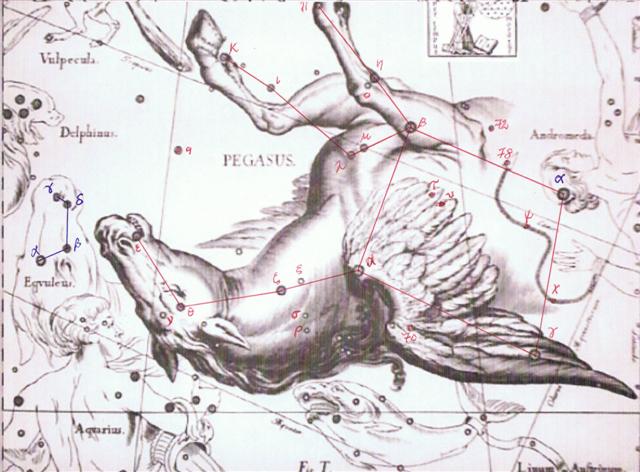 |
| 'Febr 14 (→ 214) |
15 (46 = 32 + 23) |
16 |
17 (413 = 14 * 29½) |
| "Jan 31 (396) |
"Febr 1 (32) |
2 |
3 |
|
CLOSE TO
THE SUN: |
| Sept 12 (271 - 16) θ Crateris (175.0), υ Leonis (175.2), ω Virginis (175.3), ι Crateris (175.5) |
13 (256 = 8 * 32) ο Hydrae (176.1) |
14 ζ Crateris, ξ Virginis (177.0), λ Muscae (177.1), ν Virginis (177.2), μ Muscae (177.8) |
15 Al Sarfah-10 (Turn) / Uttara Phalguni-12 (Second Reddish One) / Zibbat A.-16 (Tail of the Lion) / Shēpu-arkū sha-A-17 (Hind Leg of the Lion)
93 Leonis (178.0), DENEBOLA = β Leonis (178.3), ALARAPH (Unarmed) = β Virginis (178.6) |
 |
| 'Aug 16 |
17 (229) |
18 |
19 (365 + 231 = 596) |
| "Aug 2 (214 → "Febr 14) |
3 |
4 |
5 |
|
ku
hakarava |
kotia
hia |
kua
haro te rima |
te
marama |
 |
 |
 |
 |
|
Cb14-7 (2 * 168 = 24 *
14) |
Cb14-8 |
Cb14-9 (730) |
Cb14-10 (339) |
|
CLOSE TO
THE FULL
MOON: |
|
March 17
DZANEB (Tail) =
ω
Piscium
(362.4),
γ²
Oct.
(362.8)
*321.0 = *362.4 - *41.4 |
18 (260 - 183)
η Tucanae (363.0), ψ
Pegasi (363.1),
32 Piscium (363.2), π Phoenicis (363.4), ε Tucanae (363.6), τ Phoenicis
(363.9)
*322.0 = *363.4 - *41.4 |
19 (78)
θ Oct. (364.4)
*323.0 = *364.4 - *41.4 |
20
no star listed (365)
*324 = *365 - *41 |
|
'Febr 18 |
19 (50 = 77 - 27) |
20 |
21 |
|
"Febr 4 (400 = 365 + 35) |
5 (36) |
6 |
7 |
|
CLOSE TO
THE SUN: |
|
Sept 16
PHEKDA ('Thigh') =
γ
Ursae Majoris,
β
Hydrae (179.3),
η
Crateris (179.9)
DENEB CYGNI (α Cygni) |
17 (260 = 244 + 16)
no star listed (180) |
18
π Virginis (181.0), θ
Crucis (181.5) |
19
12h (182.6)
ο
Virginis (182.1),
η
Crucis (182.5) |
|
'Aug 20 |
21 |
22 |
23 (235 = 262 - 27) |
|
"Aug 6 |
7 |
8 (220 = 261 - 41) |
9 |
| ku kikiu |
tagata |
kua to i te heke |
|
Heke. (Heke), hakaheke, to pull down, to overthrow. Mgv.: akaeke, to overthrow, to vanquish; heke, to fall down, to fall to pieces: akaheke; akahekeheke, to demolish. Mq.: heke, to crumble, to fall down; hakaheke, to demolish, to pull down. Churchill. Kai heke, hakaheke, to deflower. Kahukahu o heke, an octopus hiding in his ink. Mq.: ve'eve'e 'tentacules du heke'. Barthel 2. Pau.: Heke, to purge. Mgv.: heke-toto, hemorrhage. Ta.: hee, to purge. Mq.: heke, to drip. Ma.: heke, id. Pau.: Hekeheke, elephantiasis. Ta.: feefee, id. Mq.: fefe, id. Sa.: fe'efe'e, id. Mgv.: Heke, eke, octopus. Ta.: fee, id. Mq.: heke, feke, fee, id. Sa.: fe'e, id. Ma.: wheke, id. Ta.: Hee, to slide, to swim. Sa.: se'e, to slide, to shoot the breakers. Ha.: hee, id. Mq.: Hee oto, to cut. Sa.: sele, id. Ha.: helehele, id. Churchill. Ma.: 1. Migrate. Islands of History. 2. Rafter. Starzecka.
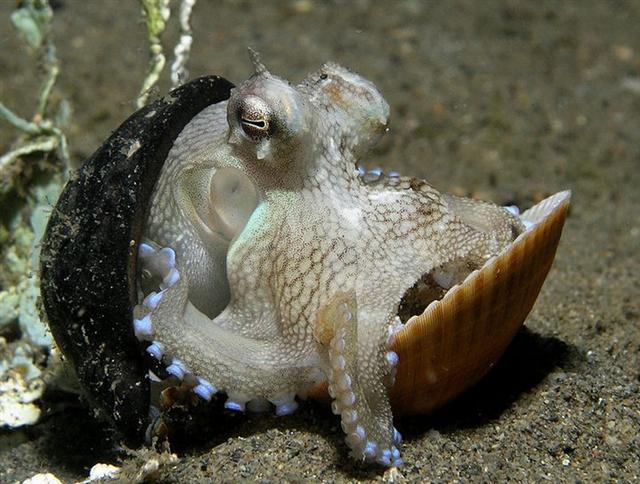
|
 |
 |
 |
| Cb14-11 (732) |
Cb14-12 |
Cb14-13 (342) |
|
CLOSE TO
THE FULL
MOON: |
| March 21 (80) Al Fargh al Thāni-25 (Rear Spout)
0h (365.25)
CAPH (Hand) = β Cassiopeiae, SIRRAH (Navel of the Horse) = α Andromedae (0.5), ε Phoenicis, γ³ Oct. (0.8) |
22 Uttara Bhādrapadā-27 (2nd of the Blessed Feet) / Wall-14 (Porcupine)
ο Oct. (1.3), ALGENIB PEGASI = γ Pegasi (1.8) |
23 χ Pegasi (2.1), θ Andromedae (2.7) |
| 'Febr 22 (53) |
Terminalia |
24 (420 = 55 + 365) |
|
... The leap day was introduced as part of the Julian reform. The day following the Terminalia (February 23) was doubled, forming the 'bis sextum - literally 'double sixth', since February 24 was 'the sixth day before the Kalends of March' using Roman inclusive counting (March 1 was the 'first day'). Although exceptions exist, the first day of the bis sextum (February 24) was usually regarded as the intercalated or 'bissextile' day since the third century. February 29 came to be regarded as the leap day when the Roman system of numbering days was replaced by sequential numbering in the late Middle Ages ... |
| "Febr 8 (403 = 53 + 350) |
9 |
10 (41) |
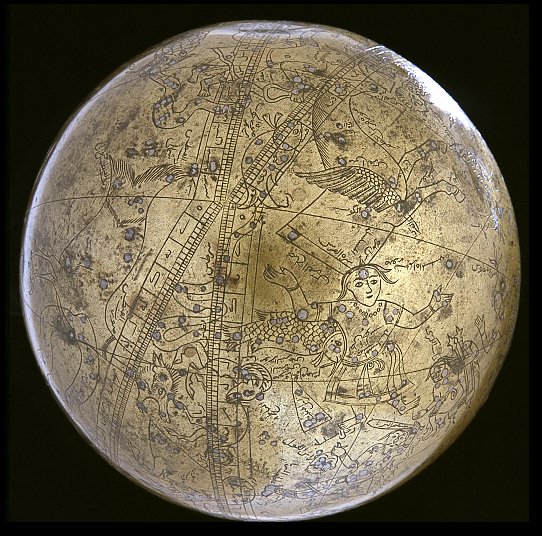 ... Maui was the fifth and youngest of his parents' sons, yet when he was born his brothers knew nothing of it. They first learned that they had a brother when he was discovered one night standing behind them in the great meeting house. Everyone was present, the four brothers, their mother Taranga, and all the relations, and there was dancing going on, when little Maui crept into the house unseen, and went and sat behind his brothers. When it came to their turn to dance, and their mother stood them up and counted them so as to be ready, he stood up with them. 'One, that's Maui mua; two, that's Maui roto; three, that's Maui taha; four, that's Maui pae', she said; these names mean Maui the first, Maui the middle, Maui the side, and Maui the edge. Then she saw this other child standing with them, and cried out, 'Hullo, where did this one come from?' 'I'm your child too', Maui replied. So she counted them again and said, 'Oh no, there ought to be only four of you. This is the first I've seen of you.' And so there was a scene, with little Maui and the old woman arguing about it in the middle of the rows of dancers. In the end she became annoyed with him. 'Now, come on, out of the house!' she said. 'You are no child of mine, you belong to someone else. Go home!' But little Maui stood up for himself. 'Well then, I'd better go, I suppose', he said. 'Since you say so, I must be someone else's child. But I did think I was yours, because I know I was born at the edge of the sea, and you cut off a tuft of your hair and wrapped me in it and threw me in the waves. After that the seaweed took care of me and I drifted about in the sea, wrapped in long tangles of kelp, until a breeze blew me on shore again, and some jelly-fish rolled themself around me to protect me on the sandy beach. Clouds of flies settled on me and I might have been eaten up by the maggots; flocks of seabirds came, and I might have been pecked to pieces. But then my great-ancestor Tama nui ki te rangi arrived. He saw the clouds of flies and all the birds, and he came and pulled away the jelly-fish, and there was I, a human being! Well, he picked me up and washed me and took me home, and hung me in the rafters in the warmth of the fire, and he saved my life. And I grew, and eventually I heard about the dancing you have here in this house, and that is what brought me here tonight.' Now Taranga listened to all this in amazement. For in the custom of our people, if a child was born before it finished growing in its mother's womb and died without knowing any of the pleasures of life, it was supposed to be buried with special prayers and ceremonies, otherwise it became a kind of evil spirit, always doing mischief to the human race and hurting them out of spite, because of having missed the happiness that they enjoy. All the evil spirits had a beginning of this sort. So Maui was a little demi-god of mischief. The story he had told was true, and as his mother listened she remembered it all. 'From the time I was in your womb,' Maui went on, 'I have known the names of these children of yours. Listen,' he said as he pointed to his brothers in turn. 'You are Maui mua, you are Maui roto, you are Maui taha, and you are Maui pae. And as for me, I am Maui potiki, Maui-the-last-born. And here I am.' When he had finished, Taranga had to wipe her eyes because there were tears in them, and she said: 'You are indeed my lastborn son. You are the child of my old age. When I had you, no one knew, and what you have been saying is the truth. Well, as you were formed out of my topknot you can be Maui tikitiki a Taranga.' So that became his name, meaning Maui-formed-in-the-topknot-of-Taranga. And this is very strange, because women in those days did not have topknots. The topknot was the most sacred part of a person, and only men had them ... |
|
CLOSE TO
THE SUN: |
| Sept 20 (263) ALCHITA = α Corvi, MA WEI (Tail of the Horse) = δ Centauri (183.1), MINKAR = ε Corvi (183.7), ρ Centauri (183.9) |
21 (264 + 365 = 629) PÁLIDA (Pale) = δ Crucis (184.6), MEGREZ (Root of the Tail) = δ Ursae Majoris (184.9) |
Equinox (420 + 210) Hasta-13 (Hand) / Chariot-28 (Worm)
GIENAH (Wing) = γ Corvi (185.1), ε Muscae (185.2), ζ Crucis (185.4), ZANIAH (Corner) = η Virginis (185.9)
*144.0 = *185.4 - *41.4 |
| 'Aug 24 (236 = 8 * 29½) |
25 |
26 |
| "Aug 10 (222 = 236 - 14) |
11 |
12 (224 = 630 - 406) |
 ... Raven gazed up and down the beach. It was pretty, but lifeless. There was no one about to upset, or play tricks upon. Raven sighed. He crossed his wings behind him and strutted up and down the sand, his shiny head cocked, his sharp eyes and ears alert for any unusual sight or sound. The mountains and the sea, the sky now ablaze with the sun by day and the moon and stars he had placed there, it was all pretty, but lifeless. Finally Raven cried out to the empty sky with a loud exasperated cry. And before the echoes of his cry faded from the shore, he heard a muffled squeak. He looked up and down the beach for its source and saw nothing. He strutted back and and forth, once, twice, three times and still saw nothing. Then he spied a flash of white in the sand. There, half buried in the sand was a giant clamshell. As his shadow fell upon it, he heard another muffled squeak. Peering down into the opening between the halves of the shell, he saw it was full of tiny creatures, cowering in fear at his shadow ... |
Bissextum could have prompted the creator of the text to dispaly a pair of fishes:
| tagata tui i tona ika |
manu puoko erua |
te manu - e noi koe te manu |
 |
 |
 |
| Cb14-14 (365 + 740 / 2) |
Cb14-15 (736 = 500 + 236) |
Cb14-16 (345) |
|
CLOSE TO
THE FULL
MOON: |
| March 24 σ Andromedae (3.0), ι Ceti (3.3), ζ Tucanae (3.5), ρ Andromedae, π Tucanae (3.7) |
25 (84) Julian Equinox no star listed (4) |
26 ANKAA = α Phoenicis, κ Phoenicis (5.0)
ALPHARD (α Hydrae) |
| 'Febr 25 (56) |
26 |
27 |
| "Febr 11 (42) |
12 (408 = 365 + 43) |
13 |
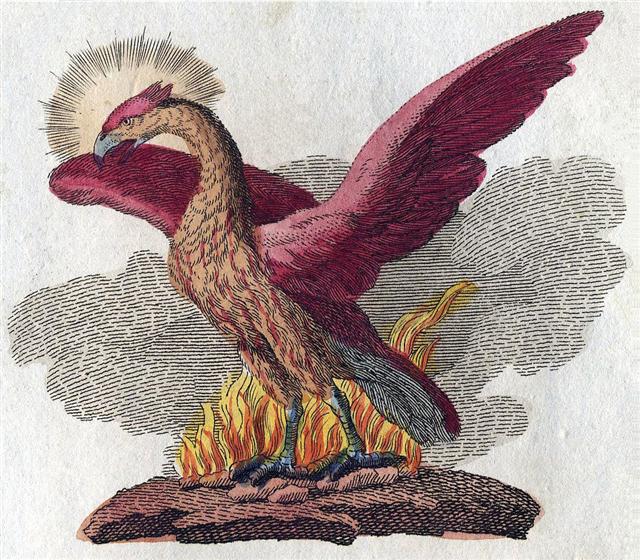 ... A sidelight falls upon the notions connected with the stag by Horapollo's statement concerning the Egyptian writing of 'A long space of time: A Stag's horns grow out each year. A picture of them means a long space of time.' Chairemon (hieroglyph no. 15, quoted by Tzetzes) made it shorter: 'eniautos: elaphos'. Louis Keimer, stressing the absence of stags in Egypt, pointed to the Oryx (Capra Nubiana) as the appropriate 'ersatz', whose head was, indeed, used for writing the word rnp = year, eventually in 'the Lord of the Year', a well-known title of Ptah. Rare as this modus of writing the word seems to have been - the Wörterbuch der Aegyptischen Sprache (eds. Erman and Grapow), vol. 2, pp. 429-33, does not even mention this variant - it is worth considering (as in every subject dealt with by Keimer), the more so as Chairemon continues his list by offering as number 16: 'eniautos: phoinix', i.e., a different span of time, the much-discussed 'Phoenix-period' (ca. 500 years) ... |
|
CLOSE TO
THE SUN: |
| Sept 23 (266) CHANG SHA (Long Sand-bank) = ζ Corvi (186.3) |
24 INTROMETIDA (Inserted) = ε Crucis (187.4), ACRUX = α Crucis (187.5)
*146.0 = *187.4 - *41.4 |
25 γ Com. Berenicis (188.0), σ Centauri (188.1), ALGORAB = δ Corvi (188.5), GACRUX = γ Crucis (188.7) |
| 'Aug 27 |
28 (240) |
29 |
| "Aug 13 (15 * 15) |
14 |
15 (227 → π) |
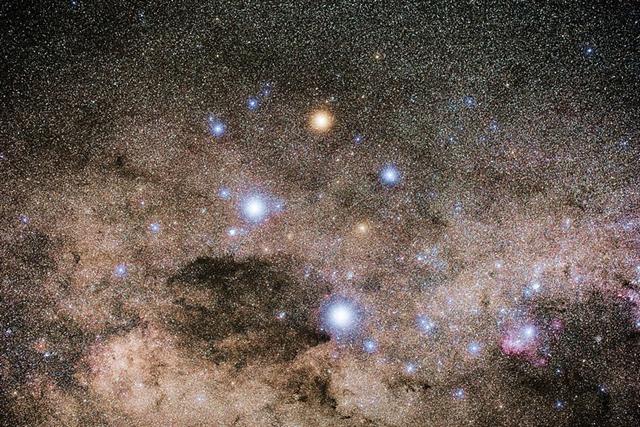 |
| kokoti hia te henua |
tagata hakaitiiti |
i te henua |
 |
 |
 |
| Cb14-17 (346) |
Cb14-18 |
Cb14-19 (500 + 240) |
|
CLOSE TO
THE FULL
MOON: |
| March 27 λ Phoenicis (6.3), β Tucanae (6.4)
45.0 = 86.4 - 41.4 |
28 ANDROMEDA GALAXY (M31), π Andromedae (7.7)
31 = 104 - (365 - 292) |
29 (88) ε Andromedae (8.2), DELTA = δ Andromedae (8.4), SCHEDIR (Breast) = α Cassiopeiae (8.6), ζ Andromedae, μ Phoenicis (8.9)
47.0 = 88.4 - 41.4 |
| 'Febr 28 (59) |
29 (87 - 27) |
'March 1 (88 - 27 = 61) |
| "Febr 14 (45 = 360 / 8) |
15 (87 - 41) |
16 |
|
CLOSE TO
THE SUN: |
| Sept 26 γ Muscae (189.0), AVIS SATYRA (Bird of the Satyrs) = η Corvi (189.3), ASTERION (Starry) = β Canum Ven. (189.5), KRAZ = β Corvi, κ Draconis (189.7) |
27 (270) α Muscae (190.2), τ Centauri (190.5), χ Virginis (190.7)
ALDERAMIN (α Cephei) |
28 Al Áwwā'-11 (The Barker) / Shur-mahrū-shirū-18 (Front or West Shur)
SOMBRERO GALAXY = M104 Virginis (191.1), ρ Virginis (191.4), PORRIMA = γ Virginis, γ Centauri (191.5)
*150.0 = *191.4 - *41.4104 = 31 + (365 - 292) |
| 'Aug 30 |
31 (270 - 27 = 243) |
'Sept 1 (244) |
| "Aug 16 |
17 |
18 (230) |
Here the end of the text on side b should return to the beginning of side a we could think. However, Ca1-1 at September 21 (264) evidently could correspond to the Rogo glyph Cb14-12 and the Rogo glyph in Ca1-8 to Cb14-19 (740 = 2 * 366 + 8 = 12 * 61 + 8 = 2 * 365 + 10).
| no glyph |
koia |
ki te hoea |
ki te henua |
te rima te hau tea |
haga i te mea ke |
ki te henua - tagata honui |
|
Hoe. Hoe 1. Paddle. Mgv.: hoe, ohe, id. Mq., Ta.: hoe, id. 2. To wheeze with fatigue (oeoe 2). Arero oeoe, to stammer, to stutter; Mgv. oe, to make a whistling sound in breathing; ohe, a cry from a person out of breath. Mq.: oe, to wheeze with fatigue. 3. Blade, knife; hoe hakaiu, clasp-knife, jack-knife; hoe hakanemu, clasp-knife; hoe pikopiko, pruning knife. 4. Ta.: oheohe, a plant. Ma.: kohekohe, id. Churchill.T. Paddle. E hoe te heiva = 'and to paddle (was their) pleasure'. Henry. Hoea, instrument for tattooing. Barthel. |
 |
 |
 |
 |
 |
 |
| Ca1-1 |
Ca1-2 |
Ca1-3 |
Ca1-4 |
Ca1-5 |
Ca1-6 |
| CLOSE TO THE FULL MOON: |
| March 21 (80)
Al Fargh al Thāni-25 (Rear Spout)
0h (365.25)
CAPH (Hand) = β Cassiopeiae, SIRRAH (Navel of the Horse) = α Andromedae (0.5), ε Phoenicis, γ³ Oct. (0.8) |
22
Uttara Bhādrapadā-27 (2nd of the Blessed Feet) / Wall-14 (Porcupine)
ο Oct. (1.3), ALGENIB PEGASI = γ Pegasi (1.8) |
23
χ Pegasi (2.1), θ Andromedae (2.7) |
24
σ Andromedae (3.0), ι Ceti (3.3), ζ Tucanae (3.5), ρ Andromedae, π Tucanae (3.7) |
Julian equinox
no star listed (4) |
26 (85 = 185 - 100)
ANKAA = α Phoenicis, κ Phoenicis (5.0)
ALPHARD (α Hydrae)
|
27
λ Phoenicis (6.3), β Tucanae (6.4)
45.0 = 86.4 - 41.4 |
| CLOSE TO THE SUN: |
| Sept 20 (263) |
21 |
Equinox |
23 |
24 |
25 |
26 |
| ALCHITA = α Corvi, MA WEI (Tail of the Horse) = δ Centauri (183.1), MINKAR = ε Corvi (183.7), ρ Centauri (183.9) |
PÁLIDA (Pale) = δ Crucis (184.6), MEGREZ (Root of the Tail) = δ Ursae Majoris (184.9) |
Hasta-13 (Hand) / Chariot-28 (Worm)
GIENAH (Wing) = γ Corvi (185.1), ε Muscae (185.2), ζ Crucis (185.4), ZANIAH (Corner) = η Virginis (185.9)
*144.0 = *185.4 - *41.4 |
CHANG SHA (Long Sand-bank) = ζ Corvi (186.3) |
INTROMETIDA (Inserted) = ε Crucis (187.4), ACRUX = α Crucis (187.5)
*146.0 = *187.4 - *41.4 |
γ Com. Berenicis (188.0), σ Centauri (188.1), ALGORAB = δ Corvi (188.5), GACRUX = γ Crucis (188.7) |
γ Muscae (189.0), AVIS SATYRA (Bird of the Satyrs) = η Corvi (189.3), ASTERION (Starry) = β Canum Ven. (189.5), KRAZ = β Corvi, κ Draconis (189.7) |
| te ika |
te honu |
 |
 |
| Ca1-7 |
Ca1-8 (= 740 - 2 * 366) |
| March 28 ANDROMEDA GALAXY (M31), π Andromedae (7.7)
31 = 104 - (365 - 292) |
29 (88) ε Andromedae (8.2), DELTA = δ Andromedae (8.4), SCHEDIR (Breast) = α Cassiopeiae (8.6), ζ Andromedae, μ Phoenicis (8.9)
47.0 = 88.4 - 41.4 |
 |
| Sept 27 (270) α Muscae (190.2), τ Centauri (190.5), χ Virginis (190.7)
ALDERAMIN (α Cephei) |
28 Al Áwwā'-11 (The Barker) / Shur-mahrū-shirū-18 (Front or West Shur)
SOMBRERO GALAXY = M104 Virginis (191.1), ρ Virginis (191.4), PORRIMA = γ Virginis, γ Centauri (191.5)
*150.0 = *191.4 - *41.4104 = 31 + (365 - 292) |
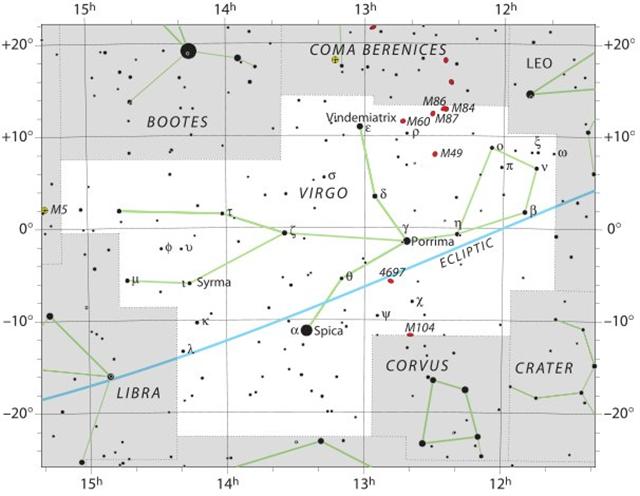 |
Basically the arrangement seems to reflect the first half of the structure of the Arabs:
... I once upon a time had discovered the key role played by Bharani from studying the manazil structure of the Arabs. This was my perception of the 1st half of the year (before Spica and Heze arrived at the beginning of the 2nd half):
|
Delta (→ 4) |
δ Andromedae |
8.4 |
March 29 (88) |
0 |
|
|
Eta (→ 7)
|
η Phoenicis |
9.4 |
March 30 |
1 |
|
|
η Andromedae |
11.4 |
April 1 (91) |
3 |
|
|
Gamma (→ 3) |
Cih (Whip) (γ Cassiopeiai) |
12.4 |
April 2 (92) |
4 |
|
|
1 |
Al Sharatain |
Pair of Signs |
β Arietis (Sheratan), γ (Mesarthim) |
27.4 |
April 17 (107) |
19 |
|
|
Musca Borealis |
35 (Head of the Fly), 39 (Kaffaljidhma), and 41 Arietis (Bharani) |
41.4 |
May 1 (121) |
33 |
0 |
|
2 |
Al Dabarān |
Follower |
α Tauri (Aldebaran), θ¹, θ²´, γ (Hyadum I), δ (Hyadum II), ε (Ain) |
63.4 |
May 23 (143) |
55 |
22 |
|
3 |
Al Hak'ah |
White Spot |
λ Orionis (Heka), φ¹, φ² |
83.4 |
June 12 (163) |
75 |
42 |
|
4 |
Al Han'ah |
Brand |
γ Gemini (Alhena), μ (Tejat Posterior), ν, η (Tejat Prior), ξ (Alzirr) |
93.4 |
June 22 (173) |
85 |
52 |
|
5 |
Al Dhirā' |
Forearm |
α Gemini (Castor), β (Pollux) |
113.4 |
July 12 (193) |
105 |
72 |
|
6 |
Al Nathrah |
Gap |
ε Cancri (Beehive) |
130.4 |
July 29 (210) |
123 |
90 |
|
7 |
Al Tarf |
End |
ξ Cancri, λ Leonis (Alterf) |
143.4 |
Aug 11 (223) |
135 |
102 |
|
8 |
Al Jabhah |
Forehead |
η Leonis (Al Jabhah), α (Regulus), ζ (Adhafera), γ (Algieba) |
152.4 |
Aug 20 (232) |
144 |
111 |
|
9 |
Al Zubrah |
Mane |
δ Leonis (Zosma), θ (Coxa) |
169.4 |
Sept 6 (249) |
161 |
128 |
|
10 |
Al Sarfah |
Turn |
β Leonis (Denebola) |
178.3 |
Sept 15 (258) |
170 |
137 |
|
11 |
Al Áwwā' |
Barker |
β (Alaraph), η (Zaniah), γ (Porrima), δ (Minelauva), ε Virginis (Vindemiatrix) |
191.5 |
Sept 28 (271) |
183 |
150 |
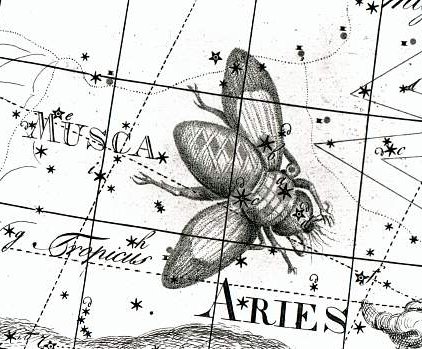
|


































